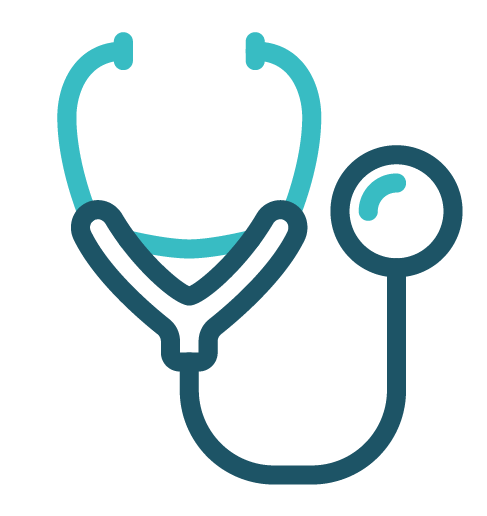There are a variety of care coordination models that are used to improve patient healthcare. Some examples include disease management programs, patient navigation services, and health information exchange systems. While there are many different care management models available, they all have the same goal of helping patients get the high-quality care that they need. Whether you are looking for support managing a chronic condition or simply want to access health resources more easily, there is likely a care coordination model that can help meet your needs. Let's take a closer look at what these can achieve for patients and coordinated care teams alike.
Coordinated Care and its Models: Explained
While each model has its own unique features and benefits, they all share the goal of improving healthcare outcomes through improved communication, coordination, and collaboration between patients, providers, and other healthcare professionals, whether you are a patient navigating the complex healthcare system or a provider looking for ways to provide more effective care to your patients.
These models involve a variety of different strategies and approaches to care delivery, ranging from team-based care to case management to medication reconciliation to electronic health records. More than 50% of care coordination models for patient healthcare aim to improve care delivery for providers and try to facilitate communication between patients, their care team, and their primary care providers.
Teamwork
Coordinated care is increasingly utilizing teamwork to provide high-quality healthcare that improves outcomes. This method allows for multiple perspectives from different individuals to come together in providing comprehensive care. Care coordinators, such as primary care physicians and specialists, nurses, case managers, and behavioral health care providers, collaborate with each other to plan out a highly effective course of treatment for their patients. Sufficient communication is paramount for successful team-based patient care models since it allows members to openly discuss the unique needs of each individual patient and learn from one another in order to maximize the quality of holistic care. Working together creates an efficient use of medical resources across specialties and also creates a welcoming and supportive atmosphere for clinicians treating their patients.
Care Management
Another key component is care management. This refers to the processes used to ensure that patients receive appropriate healthcare services in a timely manner, as well as being supported in managing their health and healthcare needs. Care management helps to form the backbone of these models. It is a process used to assess, plan, implement, coordinate, monitor, and evaluate options and services to meet an individual's health needs. The goal of care management is to enable individuals to be healthy and live as independently as possible by optimizing outcomes. A multidisciplinary team consisting of doctors, nurses, dietitians, therapists, social workers, community resources, and others work together to support the person at the center of care. This involves forming a care plan for patients that outlines the goals and objectives for better health outcomes, such as improving physical activities or increasing access to nutritional resources.
Medication Management
Medication management plays a critical role in optimizing this care. When this is addressed in coordinated efforts among providers, patients receive the most comprehensive approach to their health care. To achieve the best outcomes, medication reconciliation - an important process that matches current medications with recently prescribed medications - should be used by care coordinators to reduce potential errors that can occur with multiple prescriber interventions. In addition, care teams should have resources available to assist with issues such as communication between providers and far-reaching educational initiatives for both health professionals and healthcare consumers. Managed medication plans can help ensure that patients receive the most accurate, safe, and up-to-date information from coordinating care teams without introducing needless complexity to the patient’s health and medical treatment.
Health Information Technology
Healthcare is also increasingly using technology to help manage patient care, and this can include the use of electronic health records, as well as other forms of health information technology (HIT). These technologies are used to collect, store, and track important patient data, and can help improve care coordination and communication between providers. Having secure, centralized databases of patient records allows health providers to access reliable medical information for better diagnoses and treatment plans. Moreover, HIT systems can also provide reminders to patients about appointments or prescribed treatments. This makes it easier for patients to understand their own health conditions, as well as the type of care they are receiving when interacting with doctors. Ultimately, by providing a platform for better data storage and communication, HIT is essential in successfully implementing care coordination models.
Patient-Centered Medical Homes
Finally, another type of care coordination model that has become increasingly popular in healthcare is the patient-centered medical home (PCMH), which aims to create a team-based approach to healthcare delivery. This model places an emphasis on the importance of patient involvement and empowerment and is designed to ensure that patients receive the right care at the right time. This effective care coordination model revolves around interdisciplinary collaboration among the patient's primary physician, specialists, nurses, and other health professionals to create comprehensive care plans. Patients in a medical home setting have an active role in their own healthcare decision-making, including being supported in efficiently navigating the health system to receive necessary services. By focusing on integrating different components of health delivery systems and enhancing communication between providers, these medical home models have been shown to improve clinical outcomes, increase satisfaction levels of patients and providers alike, bolster consistency of care, reduce unnecessary costs and duplicate services, and improve clinical efficiency as well as patient education processes.
Whatever you are looking for, there is a model that can meet your needs and help you deliver a high-quality care coordination program to improve outcomes and patient needs.
Allowing Technology to Assist in Coordinated Care Plans
Forcura helps home-based care providers deliver quality care with tools that streamline workflows, improve communications, and give teams increased visibility for better business and clinical decisions. We've partnered with more than 800 clients in 7,000 locations, proving we are a trusted workflow management solution partner for providers in home health, hospice, personal care, home infusion therapy, and other services across the U.S. Let us make your workflow easier for you so that you can prioritize your care for optimal performance and outcomes. For more information, check out Forcura today!







